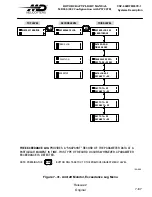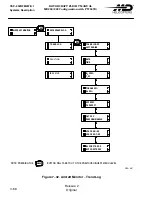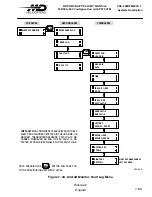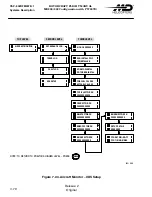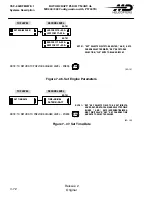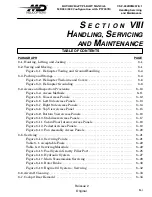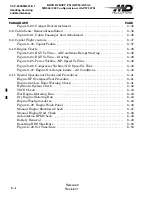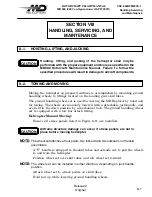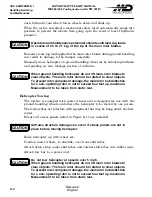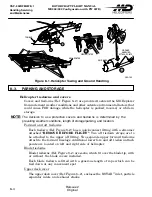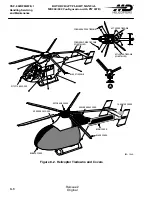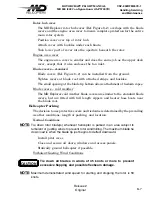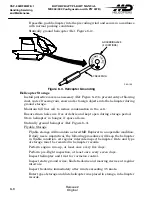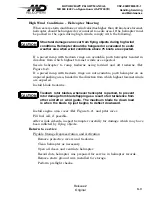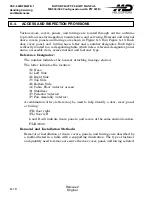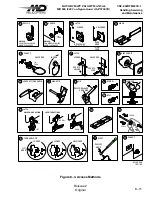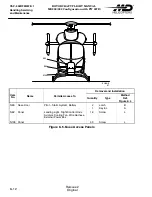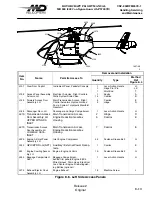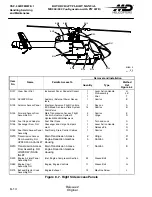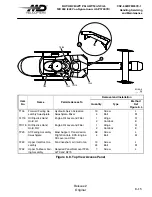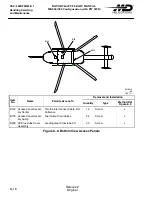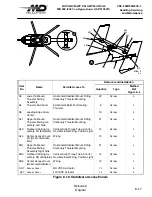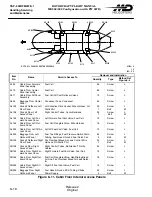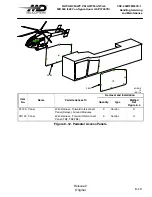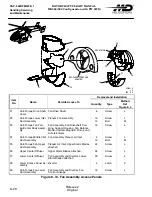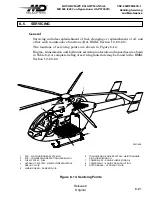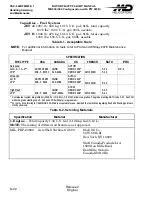
CSP
−
902RFM207E
−
1
ROTORCRAFT FLIGHT MANUAL
MD900 (902 Configuration with PW 207E)
Handling Servicing
and Maintenance
Original
8
−
7
Reissue 2
Rotor hub cover
The MD Explorer rotor hub cover (Ref. Figure 8-2) overlaps with the blade
covers and the engine area cover to insure complete protection for the entire
main rotor system.
Position cover over top of rotor hub.
Attach cover with buckles under each blade.
Tuck lower part of cover into the aperture beneath the rotor.
Engine area cover
The engine area cover is similar and does the same job as the upper deck
cover, except that it also encloses the fan inlet.
Blade covers - standard
Blade covers (Ref. Figure 8-2) can be installed from the ground.
Tighten covers at blade root with attached straps and buckles.
The small opening at the blade tip bottom allows attachment of tiedown ropes.
Blade covers - cold weather
The MD Explorer cold weather blade covers are similar to the standard blade
covers, but are fitted with full length zippers and heater hose boots near
the blade root.
Helicopter Parking
The decision to use protective covers and tiedowns is determined by the prevailing
weather conditions, length of parking, and location.
Normal Conditions
NOTE
:
Tie down rotor blade(s) whenever helicopter is parked in an area subject to
turbulent or gusting winds to prevent rotor windmilling. The maximum blade tie
down load is when the blade tip just begins to deflect downward.
Install pitot cover.
Close and secure all doors, windows and access panels.
Statically ground helicopter if possible.
Turbulent/Gusting Wind Conditions
Tie down all blades in winds of 45 knots or more to prevent
excessive flapping and possible flexbeam damage.
NOTE
:
Maximum demonstrated wind speed for starting and stopping the rotor is 50
knots.
CAUTION
Summary of Contents for MD900 Explorer
Page 4: ......

